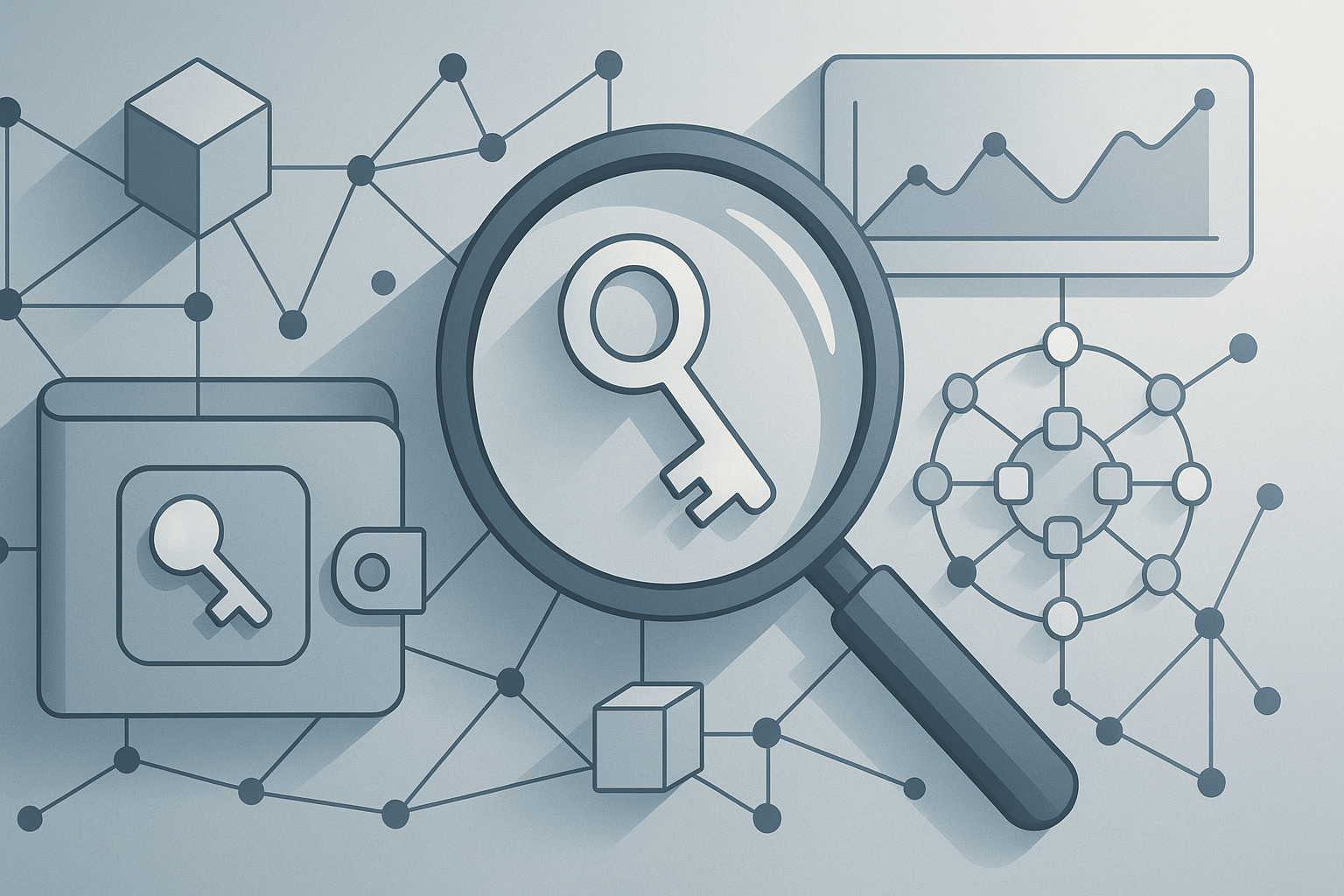Getting started with Web3 wallets means more than picking a tool; it is about understanding how private keys control access to assets and what steps guard those assets as you explore the on-chain world.
Become a Doc: Profile Ethereum wallets and discover their behavior.
Use WalletAutopsy.
What is a Web3 wallet?
Digital keys matter because a Web3 wallet does not hold coins; it stores the private keys that unlock access to funds on the blockchain. The wallet serves as a secure interface you use to sign transactions, manage addresses, and interact with decentralized apps, and it is essential to understand that crypto wallets do not store the coins themselves. For beginners, think of it as a portable digital keychain that proves ownership of tokens and control over smart contracts.
Categories matter in this space. A hot wallet runs on software and connects to the internet, making quick transactions convenient but requiring solid security practices. A hardware wallet, by contrast, stores keys offline, offering stronger protection against online threats. Recognizing these differences helps you balance convenience and risk as you start your journey into decentralized finance.
Choosing your first Web3 wallet
Start with compatibility and ease of use. Look for wallets that support the networks you plan to interact with and provide clear backup options. The goal is to have a straightforward setup that lets you create a recovery phrase and restore access if a device is lost or stolen.
Prioritize security features such as multi-factor checks, prompt warnings for suspicious actions, and the ability to connect to a hardware device when needed. A conservative approach is prudent for beginners: select a wallet that offers a simple interface for daily use while preserving access to more advanced security options as familiarity grows.
Security basics for beginners
Protect the seed phrase and never reveal it. Write it down and store it in a secure place, ideally offline and away from digital copies. A compromised seed phrase can compromise your entire portfolio, regardless of how many transactions you make.
Be wary of phishing attempts, malicious links, and unsolicited prompts to reveal keys or passwords. Always verify a website URL before entering credentials and use dedicated devices for wallet activities when possible.
Understanding on-chain activity with crypto analytics
On-chain activity refers to the transactions and interactions that occur on the blockchain. For beginners, learning how to read a transaction log is fundamental: you can see when a transfer occurred, the amount moved, and which addresses were involved. This kind of visibility helps you assess risk before engaging with new projects or token transfers.
Crypto analytics tools provide summaries of activity, track address histories, and highlight unusual patterns. While these tools are not a substitute for personal diligence, they offer context that can inform wallet decisions, such as which tokens are moving through your addresses and where liquidity flows originate. Use analytics to complement your own checks rather than rely on a single source of truth.
Practice with caution and start small. As you gain experience, you’ll learn to interpret gas costs, transaction speeds, and the sometimes complex interactions between smart contracts. An informed approach reduces mistakes and helps you recognize when to pause and reassess a position or a new dApp you plan to use.
Getting started: first steps to set up
Install and create a wallet with a clean device, then generate a recovery phrase and store it securely. Remember that recovery phrases are the keys to your crypto wallets, so treat them with the same care you would give a physical vault key.
Backups matter and multiple backups are wise. Consider keeping a couple of secure copies in different safe locations. This redundancy helps you recover access in case one store is compromised or inaccessible.
Test and learn by performing small transactions on a test network or with minimal amounts. This practice builds familiarity with signing processes, gas mechanics, and the steps required to complete a transfer without exposing large sums to early mistakes.
Maintaining good habits as you grow
Regular reviews of active addresses and recent activity can reveal unexpected moves or tasks you did not intend. Periodic checks reinforce awareness and help you stay aligned with your risk tolerance and investment goals.
Keep software updated and use trusted sources for wallet apps and browser extensions. Software updates frequently fix security gaps and improve usability, which reduces the chance of human error during routine actions.
Conclusion: steady learning and responsible use
Knowledge and prudence form the foundation of a solid start in the world of Web3. As you expand your holdings and explore more complex interactions, the balance between convenience and security will guide your decisions, and crypto analytics will help you track activity with clarity. Stay curious, stay cautious, and treat every new interaction as an opportunity to learn more about how crypto wallets empower ownership and control in the digital era.
